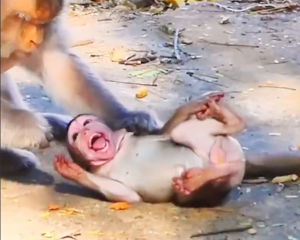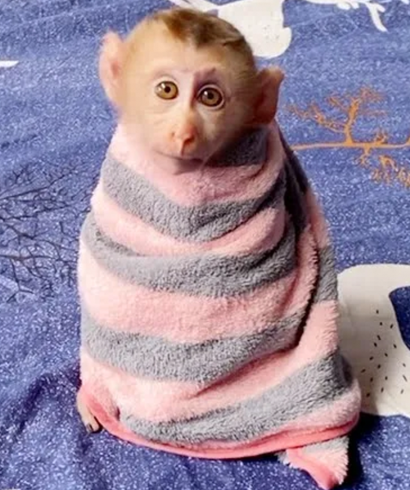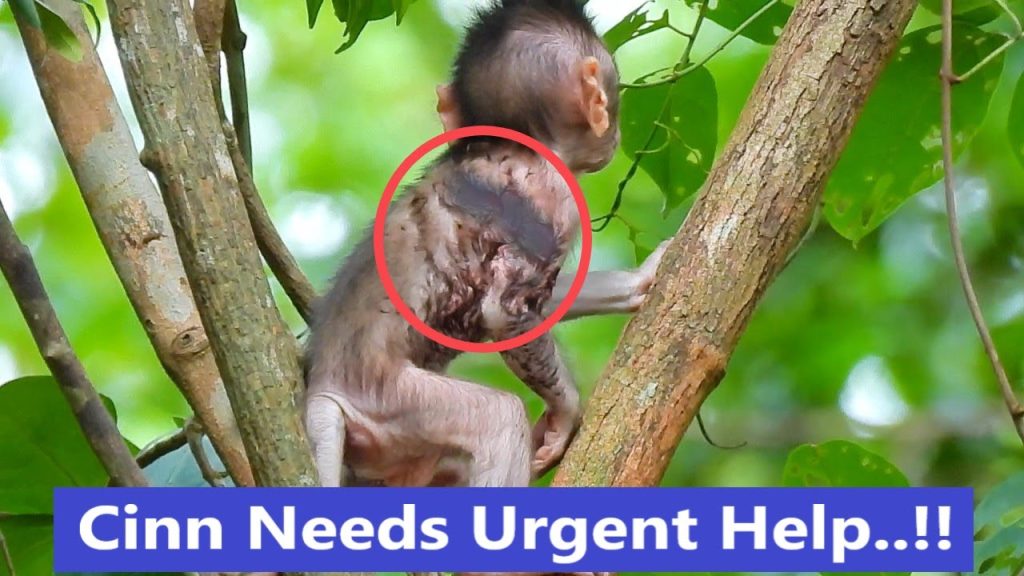
The bustling forest clearing was alive with the chatter of a monkey troop. Amid the chaos of rustling leaves and the occasional squabble over food, one scene stood out as particularly troubling. A wild monkey mom clutched her tiny baby tightly, her movements sharp and aggressive. The baby’s frail cries echoed through the troop, a haunting sound that left visitors uneasy.

The wild monkey mom’s behavior was unlike the nurturing image most associate with motherhood. Instead of gently grooming her baby, she bit down on its fragile arms and legs with a force that made onlookers wince. The baby whimpered in pain, struggling to escape her relentless grip, but it was futile. She yanked the baby’s fur and even plucked at the soft fuzz on its tiny head, leaving patches of raw skin exposed. The sight was heartbreaking.
Nearby, the other members of the troop seemed indifferent to the abuse. Some preened themselves in the sunlight, while others scavenged the ground for scraps of food. It was as if this cruel display had become a normalized part of their world. The visitors watching from a safe distance were horrified, their gasps audible as they whispered among themselves about the baby’s suffering.
The mother’s aggression seemed to serve a disturbing purpose. She dragged her crying baby toward the visitors, using its pitiful cries as bait. With calculated moves, she positioned herself near the edge of the troop’s territory, where humans often came to watch or feed the monkeys. Her eyes scanned the crowd, locking onto anyone holding food or other offerings. Her baby’s tears and her own menacing demeanor worked together to elicit pity—and handouts.
A visitor, unable to bear the scene, tossed a banana toward the mother. She darted forward, snatching the fruit with one hand while holding her baby with the other. Her grip on the baby tightened as she devoured the banana with ferocious speed. Once the snack was gone, her attention turned back to her baby, not with care but with more rough handling. It was as if the child’s suffering fueled her manipulative tactics.
The baby, a fragile bundle of soft fur and wide, fearful eyes, was too weak to resist. It clung to its mother, not out of trust or love, but sheer survival instinct. Its tiny hands trembled as it gripped her fur, its cries growing fainter with each passing moment. The visitors could see the baby’s ribs through its thin coat, a stark reminder of how neglected it was despite being constantly by its mother’s side.
Some visitors attempted to intervene by tossing more food, hoping to distract the mother or ease the baby’s plight. But their efforts only reinforced her behavior. The mother’s aggression seemed to escalate, her biting and pulling more severe as she realized the dramatic display brought more rewards. The baby’s suffering had become a tool for her survival strategy, and the visitors, albeit well-intentioned, were unwitting participants in the cycle.
The troop’s leader, a massive male with a scarred face, observed from a distance. Occasionally, he barked orders or intervened in disputes among other members, but he showed no interest in the mother’s actions. The baby’s suffering was ignored, a harsh testament to the wild’s unforgiving nature.
As the sun began to dip below the horizon, the visitors reluctantly retreated, leaving behind an unsettling sense of helplessness. The baby’s cries faded into the background noise of the forest, its fate uncertain. The mother continued her routine, a mix of cruelty and survival instinct, moving deeper into the troop’s territory as the day ended.
This harsh reality of the wild left a lasting impression on those who witnessed it. It was a stark reminder that not all maternal bonds are gentle or kind. In the unforgiving world of the monkey troop, survival often demanded sacrifices, and for this cruel mother, even her baby was not spared from the brutal tactics she believed necessary to thrive.



